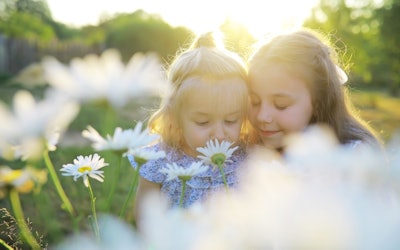Engaging Kids in Creation Care
When my family takes a vacation, we tend to center our travels around visiting National Parks here in the United States. We’ve visited most every major park from Michigan to California and from Montana to Arizona as well as lots of other historical sites and monuments in the National Park system. When my kids were younger, we would always stop at a ranger station when we first entered a park and sign up for the local Junior Ranger program. These programs allow kids of all ages to do different activities throughout the park, all while learning about the history, geography, and care of a specific park. As my kids filled out the pages of their Junior Ranger activity books, we would hike, listen to Ranger talks, read informational signs, and look closely for certain birds, animals, plants, or rock formations. Once finished, we would again visit a ranger station so our kids could show their work to a Ranger, repeat an oath, and receive a Junior Ranger badge or patch. Even though my kids are older now, those badges still hang on a display board in our basement.
Marveling at Creation’s beauty
Not only were these great times in which we got to spend time together outdoors as a family, but these were times we got to enjoy God’s creation in different and amazing ways. As we drove, hiked, read, and explored, we also experienced some of the most beautiful parts of God’s creation. We saw night skies filled with stars. We saw creatures and plants that God created specifically to adapt to the environment that they lived in. We saw flowers and rocks more colorful than I can explain. As the Psalmist exclaims in Psalm 19, “The heavens declare the glory of God; the skies proclaim the work of his hands.” It was hard to experience all of this and not echo our creator's words at the end of each day in Genesis 1. This was all good.
Exploring God’s goodness in creation
One of the more specific things that these trips and experiences allowed us to do was to teach our kids about creation care. In Genesis 1, God created humans in his image and gave them the task of ruling over all of creation. In Genesis 2, this mandate is clarified more, as God gave humans the task of working and caring for the created world. These are not destructive tasks. Humanity's role was to use creation responsibly and to care for it as something created by God to be good.
These tasks of ruling, working, and caring for God’s good creation extend to us today. Spending time in the created world allowed us to point out the goodness of God’s creation to our kids. We talked about how we are called to care for God's world, not only when we are on vacation but every day of our lives. You don’t have to visit a National Park to begin these creation care lessons. State parks, local parks, nature trails, or even your own backyard are great places to start conversations about creation and how we can take care of it.
Learning how to care for God’s world
Another way that we have taught our kids about caring for creation is by including outdoor chores in our weekly tasks. While we pull weeds, mow the lawn, water plants, or care for our garden, we talk about how God created the world to be good, how sin has affected our relationship with the created world, and how we can work to restore the world around us. As our kids have gotten older, our conversations have deepened. They have included conversations about water conservation, using less chemicals to control weeds or promote growth, planting sustainable plants that don’t rob the soil of too much water or nutrients, or the role that insects and other creatures play in a healthy environment. All of these have required me as a parent and guide to educate myself as I try to raise my children and educate about creation care as well.
Becoming an active steward of creation
There are other things that you can do to help your kids engage in creation care as well. Include your kids in whatever recycling you do at home. And if you haven’t begun recycling regularly, have your kids help you figure out what and how you can recycle at home. Have kids help sort trash so that they take an active role in the recycling process. You might even be able to take your kids to a local recycling center to see the work that is done there or to volunteer. You can also take part in trash pickup days. When we lived in California, our town had a river that ran nearby. Every year, an organization in the town sponsored a community float and trash pickup day where people would float down the river on inner tubes or rafts while they picked up trash together to clean up the river. Many rafting companies do similar things in the spring and fall. They may even provide free rafting on those days. Check with your local companies or municipalities to see if anything like that happens in your area. You can also make picking up trash a part of your everyday life. If you go for daily walks with your kids, make it a goal to pick up 5 pieces of trash each walk and talk about the importance of not littering and how that is caring for God’s creation.
Keep learning
For me, the bottom line when it comes to teaching kids about creation care is open discussions and doing something together. Have age appropriate open discussions about choices that you as a family are making about caring for God’s good creation. Explain why you make these choices and why caring for creation is important in the first place. And then do something together to care for creation. Model it for your kids and while you work together, talk about why what you are doing is important.
As God spoke the world into existence, he said that it was good. God placed us in positions of authority over his good creation to care for it and nurture it. Explore his world together as a family. Enjoy waterfalls and sunsets, beaches and forests, stars and plants and animals together. And care for all of these things together as stewards of the good world God made for us.
Read more from Family Fire:

Letting Go of Adult Kids

Kim Sullivan

Treating Children as Adults

Rev. Dr. Steven Koster

Guiding Your Kids to Celebrate Easter and Pentecost

Rev. Travis Jamieson
